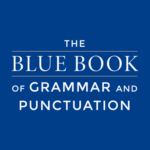
Learn English Grammar Online Now with These 28 Amazing Resources
Learning English grammar is important, but sometimes it can be difficult to know where to start.
I’ve been an English teacher for almost 20 years, so I know there’s a difference between knowing English grammar and really mastering it.
So, if you want to learn English grammar online or simply improve your skills, here’s a list of 28 English grammar websites, including tutorials, video courses and exercises covering every important grammar topic out there!
Contents
- Learn English Grammar
-
- 1. Best for Grammar Rules: Grammarly Handbook
- 2. Best for Extensive Examples: Education First
- 3. Best for Organized Lessons: EnglishClub
- 4. Best for British English: British Council
- 5. Best Podcast: Grammar Girl
- 6. Best for Short Courses: Alison English Grammar Courses
- 7. Best for Advanced Courses: edX
- 8. Best for Grammar Basics: Ginger
- 9. Best for Quick Lessons: English Grammar 101
- 10. Best Explanations: Grammar in English
- 11. Best for Visual Learners: YouTube
- Practice English Grammar
-
- 12. Best for Comprehensive Exercises: Englisch Hilfen (English Help)
- 13. Best for Grammar from Native Speakers: FluentU
- 14. Best for Textbook-Style Exercises: Oxford Practice Grammar Online
- 15. Best for Beginners: Passport to English
- 16. Best for Intermediate Learners: EnglishGrammar
- 17. Best for Verb Tenses: English Page
- 18. Best for Conditionals and Subjunctives: EGO4U
- 19. Best for Parts of Speech: My English Pages
- 20. Best for Improving Writing: GrammarBook
- 21. Best for Visual Examples: LEO Network
- 22. Best for Worksheets: GrammarBank.com
- 23. Best for Commonly Confused Words: 5 Minute English
- 24. Best for Step-by-Step Exercises: Daily Grammar
- 25. Best for Regularly Updated Quizzes: Grammar Bytes
- 26. Best for Fill-in-the-Blank Quizzes: Perfect English Grammar
- 27. Best for Multiple-Choice Quizzes: UsingEnglish.com
- 28. Best for Multiple Exercises per Topic: first-english
- Tips to Help You Learn English Grammar Online
Download: This blog post is available as a convenient and portable PDF that you can take anywhere. Click here to get a copy. (Download)
Learn English Grammar
These websites give you helpful explanations about major grammar points:
1. Best for Grammar Rules: Grammarly Handbook
Price: Free
Level: Advanced
The Grammarly spelling and grammar checker doesn’t just check writing mistakes—it also explains them so you don’t make the same mistakes again.
Grammarly has collected a ton of rules, facts and tips on every possible grammar topic and put them together in a clearly arranged handbook. It covers everything from adverbs, commas and capital letters to more difficult topics like English idioms and the passive voice.
Explanations are written in a blog-like way—personal and in full paragraphs—so it’s a fantastic resource for more advanced learners. In fact, Grammarly is actually designed for native English speakers who want to improve their grammar!
2. Best for Extensive Examples: Education First
Price: Free
Level: All levels
Education First’s Grammar Guide is very well organized and is a good starting place to learn how to use parts of speech.
The rules themselves are short and use many example sentences to show how everything works. If you learn better through examples than through rules, this is an excellent resource for you.
The Grammar Guide doesn’t include exercises, so you’ll need to practice with another resource. However, Education First does include other free English resources, including an English proficiency test, a list of common English idioms and vocabulary lists by frequency.
3. Best for Organized Lessons: EnglishClub
Price: Free
Level: Beginner and intermediate
EnglishClub is another website with grammar lessons, and the writing on this one is friendly and super easy to understand.
Some lessons have quizzes, and others have special tips that explain commonly misunderstood facts about each topic.
4. Best for British English: British Council
Price: Free
Level: All levels
British Council is a great resource for all language learners, especially if you’re learning British English.
There’s a huge amount of information here about any kind of grammar you may need to know. Just choose your level and then you’ll get several specific grammar topics to explore.
There are lots of practice exercises for each topic. You can also take tests to find out your level of English fluency.
5. Best Podcast: Grammar Girl
Price: Free
Level: Intermediate and advanced
Grammar Girl is both a blog and a podcast that provides short, friendly tips to improve the grammar in your writing, including punctuation, style and even business tips.
Grammar Girl (also known as Mignon Fogarty) makes learning grammar fun and simple with memory tricks. Her “Quick and Dirty Tips” make it easier to remember and use difficult grammar rules.
This resource is also used by native speakers, so it will definitely help your English sound more natural. You can find the podcast on Apple and Spotify.
6. Best for Short Courses: Alison English Grammar Courses
Price: Free; Premium available
Level: All levels
Not everybody likes to learn alone. For those who prefer to learn in a classroom, you might want to try an online course.
Alison has a number of free online courses for learning English grammar. These courses usually involve watching videos and then doing assignments.
The best part is that you can often interact with (talk to) the other students and the teacher. So, if you have a question or want to practice with someone, you can!
7. Best for Advanced Courses: edX
Price: Free
Level: Upper-intermediate and advanced
This resource offers MOOCs, which are Massive Open Online Courses.
These courses are prepared by world-famous institutions and universities such as Oxford or Cambridge, and allow you to learn from home at your own pace, mostly for free.
When it comes to learning English grammar, edX has several MOOCs you can choose from. Two I recommend are:
- Upper-Intermediate English: Business and Technology. Upper-intermediate learners can learn vocabulary and grammar related to technology, as well as how to write a business plan.
- Upper-Intermediate English: Business and Modern Life. This course will improve your English grammar and vocabulary skills with the help of topics such as sports, films, natural resources and more.
If you’d like a paid certificate to show what you’ve learned, edX also offers those.
8. Best for Grammar Basics: Ginger
Price: Free; Premium available
Level: All levels
Ginger’s comprehensive grammar explanations are divided into topics, so you can make sure you understand all of the most common grammar rules as you need them.
The grammar explanations are clear and easy to understand with plenty of examples. Some topics, such as pronouns and conjunctions, come with their own short exercises, too.
Ginger also has a free grammar checker, so you can practice writing and get feedback on it immediately.
To get more personalized feedback, you can purchase Ginger’s English Personal Trainer. It will analyze your writing, identify your weak areas and prepare grammar exercises accordingly to help you improve.
9. Best for Quick Lessons: English Grammar 101
Price: $15 for six months
Level: Intermediate
Do you prefer learning with a textbook, but don’t want to carry one around all the time? Then you’ll love English Grammar 101, which is set up just like a grammar textbook.
Each easy-to-understand lesson (or chapter) only covers one topic at a time and is followed by an exercise section to test your understanding of what you learned.
The short length of the chapters means you can spend a few minutes a day on one grammar rule, and learn a lot within a short time.
10. Best Explanations: Grammar in English
Price: Free
Level: All levels
Grammar in English is great for any level of English student. Beginners can learn the basics, while intermediate and advanced students can review or work on more complex topics.
Topics are listed on the main page and at the top of every other page. Just click on what you want to learn to read the description and see clear, helpful examples of each grammar point.
There are also short exercises that you can complete to check your understanding of each topic. However, here’s a word of warning: This site has ads, and some of them look like additional content, but they’re not.
11. Best for Visual Learners: YouTube
Price: Free
Level: All levels
I haven’t forgotten about all you visual learners! For those of you who prefer to watch someone explain the rules (instead of reading them), YouTube has plenty of lessons to offer.
Some great English grammar lessons can be found on English with Ronnie, Let’s Talk and many other channels.
For lessons on something specific, search YouTube for “[topic] grammar lesson” and you’ll find plenty of options.
Practice English Grammar
These websites focus on exercises and quizzes so you can apply what you’ve learned about English grammar:
12. Best for Comprehensive Exercises: Englisch Hilfen (English Help)
Price: Free
Level: All levels
Make sure you use the English version of this site, because it also comes in German!
Englisch Hilfen contains amazing grammar explanations and exercises, and access to everything is completely free. Just choose a topic from the list on the left and start learning.
Clicking on a topic will take you to a webpage with all of the available links related to that topic. The links are normally arranged according to how you should learn the topic, or by increasing difficulty.
At the end of the list of grammar links, you’ll find links to the exercises on that topic. The site is very user-friendly and easy to use.
13. Best for Grammar from Native Speakers: FluentU
Price: Current rates here; free trial available
Level: All levels
FluentU helps you learn grammar through authentic videos—things like popular music videos, movie clips and street interviews—with interactive captions. When you click on a word, you’ll see its definition and example sentences, along with grammar tips.
After watching, you can review your English grammar with personalized quizzes based on each video clip. These have fill-in-the-blanks, multiple choice and even speaking questions (where you have to talk out loud to answer):
The videos come in bite-sized snippets, so you could watch several in one sitting and pick up a lot of grammar points naturally, instead of having to memorize rules.
14. Best for Textbook-Style Exercises: Oxford Practice Grammar Online
Price: Free
Level: All levels
The Oxford University Press website offers English grammar exercises in three levels: basic, intermediate and advanced.
Each level includes many grammar exercises, a section focusing on listening and speaking and another section targeting reading and writing. There are also useful links that take you to other Oxford language learning resources.
The English grammar exercises come in various formats, such as multiple-choice questions or putting words in the right order. Each task can cover a few grammatical matters at that level.
15. Best for Beginners: Passport to English
Price: Free
Level: All levels
Passport to English starts from zero and teaches you through vocabulary exercises, grammar lessons, dictations, games, listening and reading exercises.
If you need a complete English course, you can start with the first lesson of the Beginning English level.
If you want to improve your grammar specifically, you can find every grammar topic in alphabetical order (and where it appears in the course).
Passport To English is well-organized and includes great explanations and a lot of examples. At the end of each topic, there are several exercises to check what you’ve learned.
16. Best for Intermediate Learners: EnglishGrammar
Price: Free
Level: Intermediate and advanced
The online exercise section of the EnglishGrammar website covers various parts of speech, including adjectives, adverbs, nouns, prepositions, pronouns and more.
Once you choose a topic, you will be redirected to a page with a brief explanation and some multiple-choice questions. Each time you answer a question, you’ll find out immediately if you’re right or wrong.
EnglishGrammar is a fast, easy and efficient way to strengthen your grammar knowledge. The site also offers a chance to improve your writing skills with correct punctuation and spelling, if you need that.
17. Best for Verb Tenses: English Page
Price: Free
Level: Intermediate and advanced
English Page doesn’t have quite as much content as some of the other websites on this list, but it has some of the best English grammar exercises you’ll find, specifically for verbs.
The exercises here don’t just ask you to choose a correct answer from a list—you have to write the answer yourself.
This gets you to actually use what you’ve learned, and to practice instead of just memorizing. There’s an excellent section with grammar rules as well, with lots of sample sentences.
18. Best for Conditionals and Subjunctives: EGO4U
Price: Free
Level: Beginner and intermediate
English Grammar Online, or EGO4U, is a great place to learn English grammar online for free.
This website includes everything from an overview of all verb tenses (with examples) to a ton of lessons and exercises on conditionals, clauses and even the mysterious English subjunctive.
EGO4U divides grammar topics into separate sections so you can find exactly what you need. Each section includes grammar lessons and exercises for practice.
For example, if you’re having a problem distinguishing between the past simple and the past progressive, you can easily check it out in the “Confusing Tenses” section.
19. Best for Parts of Speech: My English Pages
Price: Free
Level: All levels
My English Pages is a free online resource that’ll help you improve your English grammar at any level.
The different topics are divided into big sections. You have tenses, parts of speech, modal verbs, determiners, clauses…the list goes on and on! If you aren’t sure how to improve your English grammar, you can start here.
For each topic, you’ll find a grammar lesson or explanation with lots of examples. At the end of the explanation, there are links where you can practice what you just learned.
20. Best for Improving Writing: GrammarBook
Price: Free; more quizzes available if you subscribe
Level: All levels
GrammarBook is an excellent resource for studying grammar and punctuation.
It has hundreds of quizzes that you can order separately, or all together with a subscription. You can also make use of the many free interactive grammar quizzes available on the site.
The quizzes cover topics like parts of speech, subject-verb agreement and the most confusing words in English.
GrammarBook’s main focus is writing in English. This site will help prepare you for written English communications in the real world, like college essays, cover letters or business proposals.
21. Best for Visual Examples: LEO Network
Level: All levels
I discovered the LEO Network by accident a couple of months ago, and I haven’t stopped using it with my students since.
LEO allows you to learn vocabulary, chat with other learners, improve your writing skills, get better at dictations, take spelling tests and so much more.
The grammar section has a list of categories and topics. Each includes one, two or three symbols next to it, which tell you what you can do with each topic.
The notebook symbol means there’s a grammar explanation. The picture symbol means there are pictures and more examples. The check mark symbol means there’s a test or exercise so you can practice the grammar you learned.
22. Best for Worksheets: GrammarBank.com
Price: Free
Level: All levels
GrammarBank.com has a large amount of English grammar exercises covering almost every topic you need to know.
While some sites only have a short quiz for each grammar topic, this one contains multiple worksheets per topic. Take a look at everything available for “if clauses,” for example.
In fact, you probably won’t be able to complete all of the exercises at once, which makes GrammarBank.com an excellent resource for revision purposes.
In addition to exercises, the site has quizzes, e-books, worksheets and other printables. There are also grammar rules specifically for beginners and advanced learners; intermediate students can find what they need in either level.
23. Best for Commonly Confused Words: 5 Minute English
Price: Free
Level: Beginner and intermediate
Though the design for 5 Minute English is not very fancy, its English explanations are clear and to the point, and most include brief exercises for practice.
This site has some great information about common grammar questions and mistakes, like this page, which explains when to use “listen to” and when to use “hear.”
In addition to the grammar explanations, you can find lessons on vocabulary, pronunciation, English slang and idioms, reading and listening.
24. Best for Step-by-Step Exercises: Daily Grammar
Price: Free
Level: Beginner and intermediate
Daily Grammar is simple both in look and content, but it has over 400 lessons on parts of speech and parts of sentences.
You can go through the grammar lessons in order, or you can use the glossary to look up a term you want to study. Daily Grammar also posts lessons to their blog (yes, every day!), along with exercises for practice.
If you’d like even more practice, Daily Grammar also offers e-textbooks and e-workbooks you can buy.
25. Best for Regularly Updated Quizzes: Grammar Bytes
Price: Free
Level: Intermediate
Grammar Bytes has bite-sized (mini) grammar lessons and exercises presented in a really friendly and sometimes silly way.
Interactive exercises let you test your skills, and they contain easy-to-understand explanations with the correct answers.
In addition to exercises, Grammar Bytes gives you grammar rules for quick reference, plus a glossary of grammar terms.
Grammar Bytes even has pages that you can print out. These are helpful if you want to do the exercises by hand or have a physical copy of grammar rules to keep handy.
26. Best for Fill-in-the-Blank Quizzes: Perfect English Grammar
Price: Free
Level: Intermediate and advanced
On the Perfect English Grammar website, you can find online exercises on many grammatical topics.
In particular, if you struggle with tenses in English, this is a great site. You can practice individual tenses, and also take “mixed” quizzes to help you identify the correct tense in different contexts.
When you visit the website, pick a topic from the list and follow the link to the exercise page. You’ll fill in the blank with your answer, and then you can check right away if it’s correct or not.
If you’re unsure about a particular grammar rule, you might be able to learn more about it under the explanations tab.
27. Best for Multiple-Choice Quizzes: UsingEnglish.com
Price: Free
Level: All levels
UsingEnglish.com has an extensive collection of free English language quizzes so you can practice various topics in grammar, word usage and vocabulary.
The tests are available for learners of all levels: beginner, intermediate and advanced. Quizzes are in the form of multiple-choice questions. You will receive a score for each quiz and can also view the answer keys.
You can practice a few specific topics under a broader grammar topic. For example, when learning about adjectives and adverbs, you can choose to do exercises about individual words or about the position of adverbs in a sentence.
28. Best for Multiple Exercises per Topic: first-english
Price: Free
Level: All levels
This website is dedicated solely to English lessons and is entirely free for anyone to learn and improve their English.
The grammar exercises cover all standard grammar topics, from tenses to different types of speech. Each topic comes with several fill-in-the-blank and multiple choice activities.
If you need help, there is either a short explanation of the grammar rule or a “Help” button that gives you a hint about the correct answer.
Tips to Help You Learn English Grammar Online
Even with a list of great resources, improving your English grammar will be easier if you follow specific steps:
1. Decide on a goal. A goal helps you create focus. Choose a specific goal for your grammar learning, such as feeling comfortable with the grammar needed for a job interview or fixing your spoken mistakes in the past tense.
2. Break your goal into smaller goals. Now that you know what you want to accomplish, you can figure out how to do that. For example, if you want to fix your past tense mistakes, you’ll need to figure out what those mistakes are. You can: ask others to point out your mistakes, record yourself and listen carefully and/or work on the past tenses you’re less familiar with.
3. Focus on one topic at a time. Don’t try to learn everything at once. Instead, learn one rule at a time and practice, using and reviewing that rule until you know it so well you could teach it to someone else.
4. Study a little every day. If you use your time wisely, you only need five to 10 minutes each day. You can read a grammar rule, do a few exercises and then practice it for the rest of the day. In the next couple of days, use that rule while writing and speaking to make sure you don’t forget it. Look for examples of the rule while you read, watch or listen to anything in English as well.
Here are some other tips for learning and practicing your English grammar skills:
- Refer to grammar examples. Most textbooks or sites explain grammar topics with loads of examples. Go through each of them while you learn. If you get stuck while practicing with an exercise, refer back to the examples.
- Create your own grammar examples. After you read about a grammar topic, try to create your own examples based on the rules. For instance, if you’ve just learned about verb tenses, come up with example sentences to test your understanding of them. (I wish I had done this when I was learning!)
- Make a list of exceptions. Like everything else, even grammar rules have their exceptions. Write them down in your notes as you learn.
- Know the grammar rules before you practice. Before starting a grammar exercise, make sure you understand the topic well. Read the explanations and look at the examples so you know why and how the rule is applied.
- Choose grammar exercises with answer keys. For anyone who doesn’t have a tutor to guide them, it is especially useful to only use textbooks, websites and resources that have answer keys, so you can check the exercises yourself and track your progress.
- Use authentic resources to continue practicing. Learning grammar is more effective if you do it in an immersive environment. After you practice English grammar exercises, use other materials to study so you can see the grammar concepts in use by native speakers.
Hopefully, you’ve found a couple of sites here that you’re excited to start using.
Just remember to use them with other English learning methods! Good luck!
Download: This blog post is available as a convenient and portable PDF that you can take anywhere. Click here to get a copy. (Download)




























